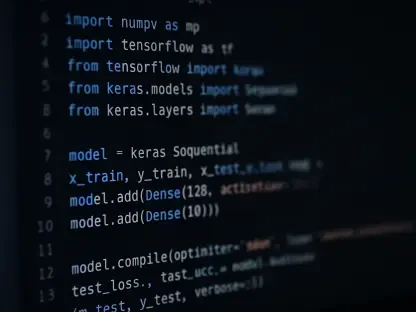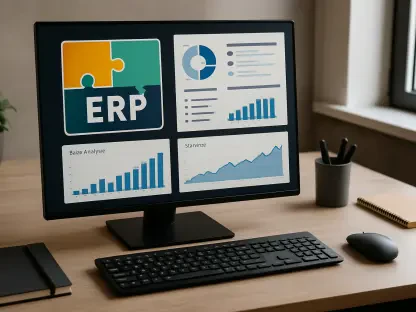Introduction to Multi-Cloud Realities
In today’s digital landscape, a staggering 89% of organizations operate within multi-cloud environments, as highlighted by recent industry surveys like the Flexera State of the Cloud Report. This widespread adoption underscores a critical shift in how businesses manage their IT infrastructure, driven by the pressing need to stay competitive and modernize operations. Multi-cloud is no longer an optional strategy but a fundamental reality for enterprises aiming to leverage diverse cloud services to meet specific workload demands.
Delving deeper into this trend, hybrid cloud architectures play a pivotal role, with 73% of multi-cloud users integrating on-premise systems with various cloud providers. This blend allows companies to maintain legacy systems while adopting cutting-edge cloud solutions, ensuring a gradual transition without disrupting core operations. The approach reflects a pragmatic balance between tradition and innovation, catering to both stability and growth.
The multi-cloud ecosystem is shaped by major players such as AWS, Azure, and other prominent providers, each offering specialized tools and services. Technological advancements, including enhanced interoperability and cloud-native designs, further influence strategic decisions, pushing organizations toward tailored solutions that optimize performance across different platforms. This dynamic environment sets the stage for exploring how event-driven architectures fit into the multi-cloud paradigm.
Understanding Multi-Cloud Event-Driven Architectures
Key Trends and Drivers
The rise of multi-cloud adoption is closely tied to the growing preference for event-driven architectures, which enable real-time processing and responsiveness critical for modern applications. This shift is fueled by the need to handle vast streams of data instantly, ensuring businesses can react to market changes or customer needs without delay. Technologies such as microservices, API gateways, and event streaming platforms like Kafka and Azure Event Hubs are at the forefront of this transformation.
Beyond technology, business imperatives also drive this trend, particularly the urgency to match the agility of FinTech startups and adhere to stringent compliance mandates in regulated industries. Event-driven systems offer the flexibility to integrate specialized services from different cloud providers, such as leveraging AWS for robust security features or Azure for advanced analytics capabilities. This strategic selection of services optimizes operational efficiency and competitive edge.
Opportunities abound for enterprises to capitalize on these architectures by aligning specific workloads with the strengths of individual cloud platforms. The ability to distribute components across multiple clouds not only enhances performance but also mitigates risks associated with vendor lock-in. As a result, organizations are increasingly viewing multi-cloud as a pathway to innovation and resilience.
Market Insights and Projections
Current data reveals the pervasive nature of multi-cloud strategies, with hybrid cloud usage remaining a dominant indicator of industry direction. The integration of on-premise and cloud systems continues to grow, reflecting a cautious yet progressive approach to digital transformation. Such statistics highlight the scale at which enterprises are navigating complex, distributed environments to meet diverse operational needs.
Looking ahead, the complexity and scale of these systems are expected to intensify over the coming years, with projections indicating a significant uptick in distributed architectures spanning cloud boundaries. Event-driven models are poised to evolve alongside advancements in cloud-native and cloud-agnostic designs, offering greater flexibility and interoperability. This trajectory suggests a future where seamless integration across platforms becomes a standard expectation.
A forward-looking perspective emphasizes the role of emerging tools and frameworks in shaping these architectures. As businesses demand more sophisticated solutions for real-time analytics and scalability, the industry anticipates continuous innovation in event streaming and processing capabilities. This evolution will likely redefine how enterprises architect their systems for maximum efficiency and adaptability.
Challenges in Building Multi-Cloud Event-Driven Systems
One of the foremost hurdles in implementing multi-cloud event-driven systems is latency, particularly when events must traverse cloud boundaries. Such delays can significantly impact performance, disrupting the real-time responsiveness that these architectures promise. Addressing this requires careful optimization of network connectivity to minimize delays across disparate environments.
Resilience poses another critical challenge, as systems must be designed to handle failures both during and after outages. Without robust failover mechanisms, there is a risk of data loss or service interruptions, which can be catastrophic in high-stakes applications. Building resilience involves not only immediate recovery strategies but also long-term mechanisms to reconcile and replay events post-outage.
Additional complexities arise in maintaining event ordering and consistency, especially in sectors like finance where sequence is paramount. Issues such as duplicate events due to network retries further complicate matters, potentially leading to inaccurate reporting or operational errors. Mitigating these risks necessitates strategies like implementing event stores, fine-tuning timeout settings, and adopting resilience policies to ensure system integrity across cloud platforms.
Navigating Security and Compliance in Multi-Cloud Environments
The regulatory landscape for multi-cloud architectures is intricate, particularly in industries like finance where compliance with strict standards is non-negotiable. Navigating this terrain demands a thorough understanding of varying requirements across regions and sectors, ensuring that data handling practices align with legal expectations. Failure to comply can result in severe penalties and reputational damage.
Security concerns are amplified in multi-cloud setups due to the expanded attack surface created by integrating multiple providers. This necessitates robust measures to safeguard data and transactions across platforms, including the adoption of secure connectivity solutions like Azure ExpressRoute and AWS Direct Connect. These tools offer low-latency, dedicated links that bypass public internet vulnerabilities, enhancing overall protection.
Adopting unified security practices is essential to protect distributed systems, alongside continuous monitoring to detect and respond to threats promptly. Emphasizing standardized protocols and leveraging provider-specific security features can fortify defenses against potential breaches. As multi-cloud environments grow, maintaining a cohesive security posture becomes a cornerstone of operational success.
Future Directions for Multi-Cloud Event-Driven Architectures
The trajectory of multi-cloud environments points toward significant advancements in event streaming and observability tools, which will enhance the ability to monitor and manage distributed systems effectively. These innovations are expected to streamline event processing, offering deeper insights into system performance across cloud boundaries. Staying ahead of these developments will be crucial for businesses aiming to maintain a competitive advantage.
Potential disruptors, such as cloud-agnostic frameworks and schema evolution for compatibility, are likely to reshape how architectures are designed and implemented. These frameworks promise greater portability and flexibility, reducing dependency on specific providers while ensuring seamless integration. As compatibility becomes a priority, such tools will play a vital role in future-proofing multi-cloud strategies.
Consumer and business preferences are also shifting toward scalability and real-time analytics, driving demand for more dynamic event-driven solutions. Global economic conditions and evolving regulatory frameworks will further influence adoption rates, prompting organizations to adapt their approaches accordingly. Keeping pace with these external factors will be essential for aligning multi-cloud initiatives with broader market trends.
Conclusion and Actionable Strategies
Reflecting on the insights gathered, the journey through multi-cloud event-driven architectures revealed a landscape defined by both immense potential and significant challenges. The discussions underscored the pervasive adoption of multi-cloud strategies and the pivotal role of event-driven systems in meeting modern business demands.
Moving forward, organizations should focus on actionable steps to navigate this complex terrain successfully. Designing for failure emerged as a critical principle, ensuring systems are resilient against inevitable disruptions. Embracing event stores and prioritizing observability provided practical ways to address distributed system challenges, while starting small and scaling gradually offered a measured approach to implementation.
Investing in robust event backbones and continuous team education stood out as essential strategies to build expertise and maintain system reliability. Regular architecture reviews and optimizations were also highlighted as necessary to adapt to evolving needs. These steps collectively paved the way for achieving resilient, efficient multi-cloud systems, ultimately enhancing business outcomes and operational confidence.









